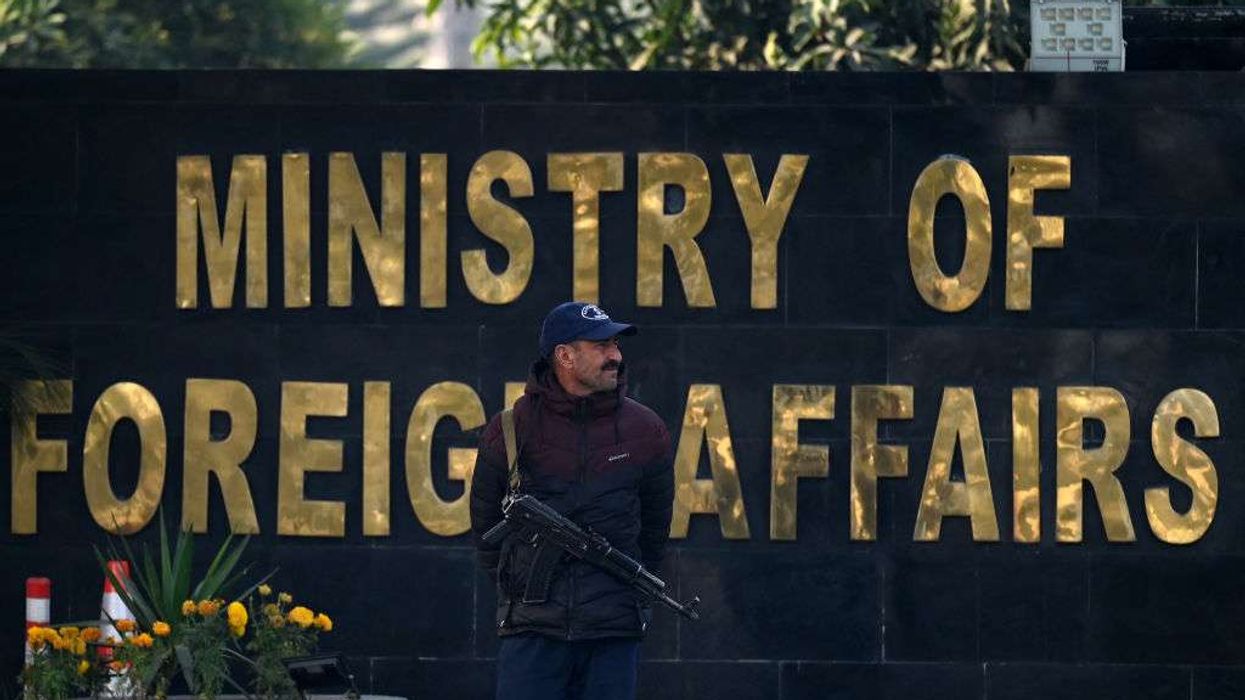THE VERSATILE ACTOR RECALLS MAGICAL MOMENTS FROM HIS LIFE AND ACTION-PACKED CAREER
by ASJAD NAZIR
PROLIFIC Indian actor Mukul Dev has had an action-packed career that has seen him mix up big commercial movies in multiple languages with turns on television.
He has worked with many big names throughout his career, including starring opposite Madhuri Dixit and playing a lead role in Bollywood legend Dilip Kumar’s final film Qila. He continues to be in demand as an actor, recently announcing two historical films and has also successfully started writing.
Working on diverse projects and genres, along with landmarks in his personal life, has gifted the younger brother of actor Rahul Dev many great moments.
Eastern Eye got Mukul Dev to take a trip down memory lane to talk about some of his most memorable life moments. Before selecting the moments, he said, “I have been gifted with many great memories and am thankful for each one of them. Here are some memorable moments from my life that immediately come to mind.”
My heroic father: I will never forget my father getting gallantry awards for his bravery. There was a particular one he received for saving an entire police station at Daryagunj, which was surrounded and supposed to be lit up. He went there and managed the entire mob alone, and got a gallantry award for that. That’s something I remember well.
Childhood: There are so many childhood memories that have remained with me. My elder brother (Rahul Dev) used to bowl me out while playing cricket. I used to sit there, cry and ask him to let me bat again.
Faith: Another moment I cannot forget was when my mother introduced me to the Buddhist way. She introduced me to the lotus sutra, the mystic law of our environment and Gautam Buddha. That day was memorable. This has come in so handy for me.
Take off: I was a pilot before I became an actor. So I will never forget clearing my flying academy exams and getting a scholarship to become a commercial pilot. I could have not have asked for anything better. I was ranked number four among so many pilots across the country, from one of the best training schools called Indira Gandhi Udaan Academy. I was so thrilled to know that I would be a commercial pilot.
Flying solo: A proud memory is of the first time I flew a plane solo. This was back in 1991. When you are a pilot, there is a time when the instructor releases you to fly solo. There is no one else besides you. That was a great moment.
Flight emergency: While training as a pilot, I had another moment which was so memorable. It wasn’t a happy one though. An emergency occurred when we were flying from Rai Bareilly in the north to the southern coast. And before we hit Trivandrum, there was really bad weather. We were in such a lurch. We were rookies and had no idea how to land. How we managed to land the aircraft that was in a hellish situation in the air is something I can never forget. That was the closest I have been to seeing death right in front of my eyes. I can never forget that. Experiences like that make you more grateful to be alive, so shouldn’t be forgotten.
Incredible landing: During flying, there was another scary moment – when I was flying and my runway was obstructed. A plane had landed and couldn’t move, so I had only half the runway available for myself. I landed on half a runway, while SAS communicating with my chief instructor. He guided me step by step and helped avert an emergency.
Big call: When I was in Mumbai I got a call from Mr Amitabh Bachchan’s office, saying they wanted me to do a film for them. It was my first film, which unfortunately didn't see the light of the day. For the first time, I was sitting next to Mrs Jaya Bachchan and Mr Amitabh Bachchan walked out, and I can never ever forget that moment.
Acting debut: An unforgettable milestone was of course when I got the Best Debut award. They nominated me and said that you are the best debutant. This happened in 1996 with my film Dastak. That’s something I fondly remember.
Madhuri magic: A great career experience for me was when I got to work with Madhuri Dixit in Wajood (1998) who was the lead heroine opposite me. I felt like a complete clown dancing with her and that’s something that brings a smile.
Ultimate compliment: Another wonderful experience would be when I got the opportunity to work with Mr Dilip Kumar in Qila. He complimented me and said that you are an amazing actor. One of the big magazines carried that. I could not have ever dreamed that someone like Mr Dilip Kumar would compliment me on my acting skills.
My child: The day my daughter was born, back in 2002, is etched in my memory. It was December 30 and I was in Delhi. I got a call late in the night from my ex-wife and flew down immediately. The next morning the moment when I held her in my arms just aces everything else that has happened to me.
Proud father: I remember with pride the moment when my daughter was getting into the Sriram school in Delhi. It was a difficult thing. She passed with flying colours. She was still a young kid, so we were so worried if she would get it, but she did through her sheer IQ. That’s one moment I can hardly forget. Holy meeting: I got an opportunity to meet his holiness Dalai Lama at the Buddhist monastery in Dharamshala. That day is imprinted in my mind. The calmness and joy that you experience when he is around you is surreal.
Write direction: I am an actor, who now also writes, and that passion stems from my love for reading. When I started writing Omerta, it wasn’t with the intention of making it into a film. But then filmmaker Hansal Mehta picked it up and turned it into a movie. Writing is one of many interests I have and I am sure will give me more moments like Omerta, but acting will always be my priority.











